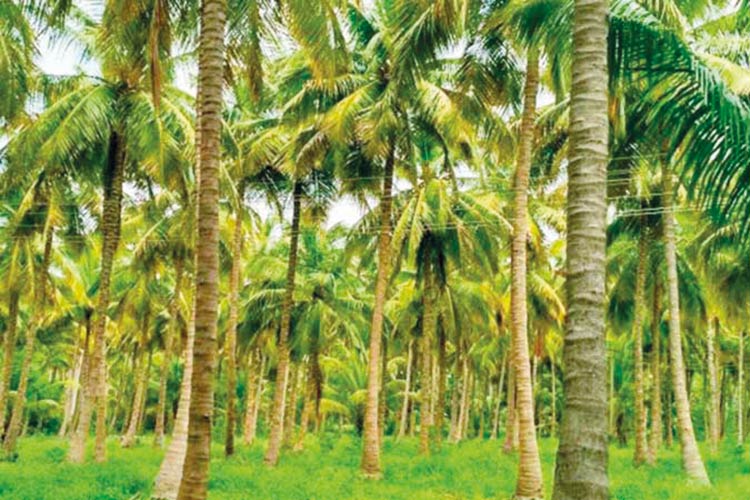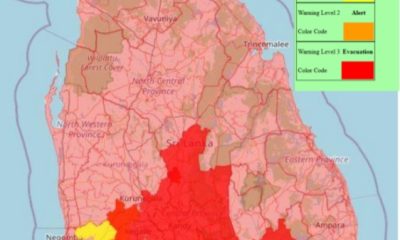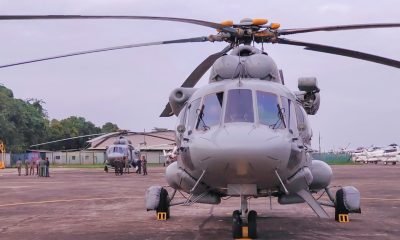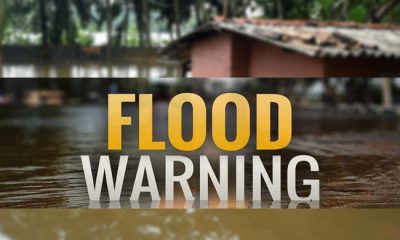News
Decrease in fertiliser input leads to drastic drop in coconut output

Climate change and wild animals also blamed
By Rathindra Kuruwita
A decrease in the fertiliser input has been one of the main reasons for a drop in the coconut harvest, Chairman of the Coconut Cultivation Board (CCB), Saman Dewage says,
“There was no fertiliser for about two years and now the price of fertiliser is very high,” he said.
Extreme weather events due to climate change also contributed to the decline in coconut production. “Pollination drops significantly when the temperature exceeds 30 degrees Celsius,” he said.
Dewage also said that a large number of coconuts are destroyed by wild animals such as monkeys and giant squirrels. Around 200 million nuts are destroyed each year by these animals, he said.
“You also need to replant coconuts to replace the old trees. According to our calculations cultivators need to replant about 10 percent of the trees each year. It has become hard to protect new plants because of porcupines, wild boars, and wild elephants. When coconut trees are young, we have to worry about red and black weevils. It has become difficult to control these pests because agricultural inputs are extremely expensive,” he said.
Dewage said Sri Lanka usually produces around three billion coconuts annually and it is highly unlikely that this number will be reached in 2025.
Meanwhile, Chairman of the Coconut Development Authority (CDA), Shantha Ranathunga said that Sri Lanka earns about 700 million dollars from coconut exports annually. The export of coconuts have increased significantly over the years, he said.
“Compared to 2023, our exports have risen by about 21 percent. In 2023, we made about 700 million dollars, by the end of 2024, we expect to make 850 million dollars,” he said.
Director of the Coconut Research Institute (CRI) Dr. N. S. Aratchige said that the coconut tree is highly sensitive to the fluctuations of weather patterns. If the rainfall of a month is under 100 millimeters, it is considered a serious drought for coconut cultivation, she said. There is also no propagation if the temperature exceeds 33 degrees Celsius. “CRI has recommended several varieties and on average a cultivator has the potential to extract about 80 nuts per year. Some of our hybrid varieties, when managed under recommended conditions, yield about 130 nuts per year,” she said.
She said while the coconut cultivator can’t change weather, he or she can take steps to mitigate the drought. “We can address droughts by following techniques to retain moisture. We can reach the potential of extracting 80 to 130 nuts if we apply the right inputs and if we retain moisture in the soil.
“The world average is 5,000 nuts per hectare. We produce about 7,000 nuts per hectare. India has achieved high productivity in recent years and produces about 9,000 nuts per hectare on average. There are some states in India that extracts about 15,000 nuts per hectare. How have they done this? By using fertilizer and through irrigation systems. The Indian state provides huge subsidies for fertilizer and irrigation systems. For example, coconut farmers get free electricity if they use new irrigation methods. On the other hand, our input costs are high and we hardly use irrigation systems, we produce about 60 nuts per tree annually although we have the potential to produce 80 to 130 nuts per tree,” she said.
Aratchige also said that in most coconut producing countries the crop damage by mammalian species is low compared to Sri Lanka. However, the damage caused by the coconut mite and red and black weevils are the same as Sri Lanka, she said.
Latest News
486 dead, 341 missing, 171,778 displaced as at 0600hrs today [05]

The situation report issued by the Disaster Management Center at 0600hrs today [5th December] confirms that 486 persons have died and another 341 persons are missing after the devastating weather conditions in the past week.
171,778 persons have been displaced and have taken refuge at 1,231 safety centers established by the government.

News
Media slams govt.’s bid to use Emergency to silence critics

Media organisations have denounced Deputy Minister of Public Security and Parliamentary Affairs Sunil Watagala after he urged law enforcement authorities to use emergency regulations to take action against those posting allegedly defamatory content about the President and senior ministers on social media.
The Sri Lanka Working Journalists Association (SLWJA) yesterday issued a strongly worded statement condemning Watagala’s remarks, warning that they posed a direct threat to freedom of expression and media rights, particularly at a time when the country is struggling through a national disaster.
Watagala made the controversial comments on 2 December during a meeting at the Malabe Divisional Secretariat attended by government officials and Deputy Media Minister Dr. Kaushalya Ariyarathna. During the discussion, the Deputy Minister claimed that a coordinated effort was underway to spread distorted or false information about the disaster situation through physical means, social media, and even AI-generated content. He also alleged that individuals based overseas were contributing to such activity.
According to the SLWJA, Watagala went further, directing police officers present at the meeting to treat those posting such content “not merely as suspects but as offenders” and to take action against them under emergency regulations currently in force.
The SLWJA accused the government of abandoning the democratic principles it once campaigned on, noting that individuals who publicly championed free speech in the past were now attempting to clamp down on it. The association said this was not an isolated incident but part of a pattern of growing state pressure on journalists and media platforms over the past year.
It warned that attempts to criminalise commentary through emergency powers especially during a disaster constituted a grave violation of constitutional rights. The union urged the government to respect democratic freedoms and refrain from using disaster-related powers to silence criticism.
In a separate statement, Internet Media Action (IMA) also expressed “strong objection” to Watagala’s comments, describing them as a “serious threat to freedom of expression”, which it said is a fundamental right guaranteed to all Sri Lankan citizens.
The IMA said Watagala’s assertion that “malicious character assassination attacks” were being carried out against the President and others through social media or other media channels, and that such acts should attract severe punishment under emergency law, represented “an abuse of power”. The organisation also criticised the Deputy Minister’s claim that false opinions or misrepresentations whether physical, online, or generated by AI could not be permitted.
Using emergency regulations imposed for disaster management to suppress political criticism amounted to “theft of fundamental rights”, the statement said, adding that the move was aimed at deliberately restricting dissent and instilling fear among social media users.
“Criticism is not a crime,” the IMA said, warning that such rhetoric could lead to widespread intimidation and self-censorship among digital activists and ordinary citizens.
The group demanded that Watagala withdraw his statement unconditionally and insisted that freedom of expression cannot be curtailed under emergency laws or any other legal framework. It also called on the government to clarify its stance on the protection of fundamental rights amid increasing concerns from civil society.
News
Cardinal calls for compassionate Christmas amid crisis

Archbishop of Colombo, Cardinal Malcolm Ranjith, has called on Sri Lankans to observe this Christmas with compassion and restraint, as the nation continues to recover from one of its worst natural disasters in recent memory.
In his message, the Colombo Archbishop has highlighted the scale of the crisis, noting that more than 1.5 million people have been displaced, while an “uncounted number” remain buried under debris in the hill country following landslides and severe flooding.
“It is a most painful situation,”
he has written acknowledging the difficulty of celebrating a season traditionally associated with joy while thousands are mourning lost loved ones, living in refugee centres, or left with nothing but the clothes they were wearing.
The Cardinal has urged the faithful to temper excessive celebrations and extravagance, instead focusing on helping those affected. “Celebrate, by all means, yes, but make it a moment of spiritual happiness and concern for the needs of those who suffer,” he said. “Assist as much as possible those who lost their loved ones, their homes, and their belongings.”
He has called for a Christmas marked by love, sharing, and solidarity, describing it as an opportunity to make the season “a deeply spiritual and joyful experience.”
-

 News5 days ago
News5 days agoWeather disasters: Sri Lanka flooded by policy blunders, weak enforcement and environmental crime – Climate Expert
-

 Latest News6 days ago
Latest News6 days agoLevel I landslide RED warnings issued to the districts of Badulla, Colombo, Gampaha, Kalutara, Kandy, Kegalle, Kurnegala, Natale, Monaragala, Nuwara Eliya and Ratnapura
-

 Latest News6 days ago
Latest News6 days agoINS VIKRANT deploys helicopters for disaster relief operations
-
News2 days ago
Lunuwila tragedy not caused by those videoing Bell 212: SLAF
-

 Latest News6 days ago
Latest News6 days agoDepartment of Irrigation issues Critical flood warning to the Kelani river basin
-

 Latest News4 days ago
Latest News4 days agoLevel III landslide early warnings issued to the districts of Badulla, Kandy, Kegalle, Kurunegala, Matale and Nuwara-Eliya
-

 News6 days ago
News6 days agoCountry reels under worst weather in living memory
-

 Editorial6 days ago
Editorial6 days agoNeeded: Action not rhetoric













